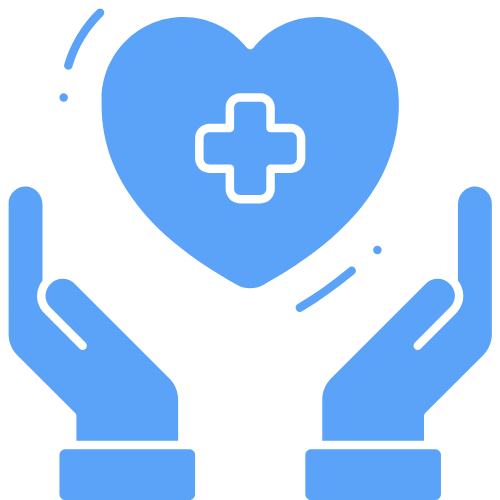Your treatment needs will determine whether family or individual therapy works best. Family therapy shows higher success rates (83.2% completion) for issues like addiction, eating disorders, and behavioral problems due to reinforced support systems. Individual therapy proves more effective for personal challenges like anxiety, depression, and trauma processing. While both approaches have distinct benefits, combining them often yields ideal outcomes especially for complex conditions requiring multi-layered intervention approaches.
Understanding Treatment Success Rates and Outcomes

While both therapeutic approaches demonstrate effectiveness in different contexts, research consistently shows that treatment success rates vary considerably based on the presenting condition and client demographics. Family-based therapy proves particularly effective for conditions like anorexia, where it achieves double the full remission rates compared to individual treatment. The inclusion of biopsychosocial evaluation helps determine which approach will be most beneficial for each unique case. Research shows that about half of anorexia patients achieve full remission through family-based therapy. You’ll find therapeutic modality effectiveness differs greatly when addressing specific challenges.
For adolescent behavioral issues and addiction, the family dynamics focus yields superior outcomes through improved support systems and boundary-setting. Individual therapy excels when addressing personal mental health concerns like anxiety, depression, or trauma. Talk therapy provides a safe space for individuals to discuss their concerns with a trained expert. Treatment success often depends on matching the right approach to your specific situation. The evidence suggests that conditions rooted in family dynamics respond better to systemic interventions, while personal mental health challenges benefit from individualized attention.
Key Differences in Therapeutic Approaches
The fundamental differences between family and individual therapy extend far beyond their treatment success rates. You’ll find distinct contrasts in their therapeutic goals, approaches, and underlying theoretical foundations. Family therapy views personality formation through the lens of familial functioning. When you’re choosing between these approaches, consider that individual therapy targets intrapsychic processes and personal growth, while family therapy addresses interactional patterns and systemic issues. Individual therapy maintains strict confidentiality and emphasizes independent psychological processes, whereas family therapy works with shared disclosures and mutual influence within the family system. Combining both approaches can be beneficial since studies show that patients are less likely to relapse when receiving both individual and family therapy.
| Aspect | Individual Therapy | Family Therapy |
|---|---|---|
| Core Focus | Personal mental health | Relational dynamics |
| Change Mechanism | Internal processing | Systemic modifications |
| Session Structure | One-on-one dialogue | Multi-participant interaction |
| Treatment Methods | CBT, EMDR, psychodynamic | Role-play, genograms, systemic |
Client Retention and Long-Term Engagement

Research demonstrates striking differences in client retention between family and individual therapeutic approaches. Family therapy shows superior retention rates, with 83.2% of clients completing treatment compared to 59.2% in individual therapy. The median treatment duration extends to 11 weeks in family therapy versus 9 weeks in individual settings. Family-based interventions have consistently proven effective in maintaining treatment adherence and reducing premature termination. Studies indicate that evidence-based treatments are available but require consistent attendance to be effective. The therapeutic process emphasizes relational aspects when addressing human problems and family dynamics.
Demographic factors extensively influence engagement patterns, with younger clients and heterosexual individuals showing higher participation in family therapy. Therapist-client dynamics play a pivotal role, as collaborative relationships in family therapy increase completion odds by 1.4 times per session. Individual therapy faces greater retention challenges, with 40-60% of clients disengaging prematurely. While both approaches’ effectiveness depends on assorted factors, family therapy’s structured involvement and systemic support mechanisms consistently yield better long-term engagement outcomes across different populations.
Impact on Mental Health and Co-Occurring Disorders
Examining both therapeutic approaches reveals distinct impacts on mental health and co-occurring disorders treatment. Each method offers unique advantages for addressing psychological challenges and substance use disorders, with family therapy strengthening support networks for relapse prevention while individual therapy investigates personal trauma and emotional healing. Research shows that combining these approaches often yields ideal outcomes, particularly when treating co-occurring conditions. Individual therapy enables patients to develop healthy coping strategies through focused one-on-one counseling sessions. Meta-analysis findings demonstrate that family counseling shows greater effectiveness than individual approaches for treating adolescent substance use disorders. Research indicates that non-manualized family therapy produces superior outcomes for both externalizing and internalizing symptoms in diverse youth populations.
- Family therapy improves family cohesion and communication, reducing interpersonal triggers
- Individual sessions provide focused attention on personal psychological rehabilitation
- Both approaches complement each other in managing dual diagnoses
- Family involvement strengthens natural support systems for sustained recovery
- Individual therapy allows for deeper exploration of trauma and mental health challenges without external pressure
The evidence suggests that selecting the most appropriate therapeutic approach depends on specific client needs, severity of co-occurring disorders, and existing family dynamics.
Making the Right Choice for Your Needs
 Choosing between individual and family therapy boils down to understanding your specific therapeutic needs, treatment goals, and personal circumstances. Your decision should align with both practical accessibility considerations and personalized goal setting. Similar to how Smith Scholarworks collections are organized by type, therapy approaches are structured to serve different purposes.
Choosing between individual and family therapy boils down to understanding your specific therapeutic needs, treatment goals, and personal circumstances. Your decision should align with both practical accessibility considerations and personalized goal setting. Similar to how Smith Scholarworks collections are organized by type, therapy approaches are structured to serve different purposes.
| Consider Individual Therapy If: | Consider Family Therapy If: |
|---|---|
| You’re dealing with personal trauma or anxiety | You’re addressing substance use disorders |
| You need focused self-exploration | You’re experiencing relational conflicts |
| You prefer one-on-one therapeutic alliance | You have multigenerational issues |
| Geographic barriers limit family participation | Online platforms can accommodate all members |
When evaluating your options, assess whether your challenges stem from internal patterns requiring individual attention or systemic dynamics that affect multiple family members. Consider that while individual therapy focuses on personal growth, family therapy addresses broader relational patterns and communication systems. Your choice should reflect both your therapeutic objectives and logistical capabilities.
Frequently Asked Questions
How Much Does Each Type of Therapy Typically Cost per Session?
You’ll find that individual therapy typically costs between $80-$200 per hour, with sessions lasting 45-60 minutes. Family therapy hourly rates run higher at $100-$250, with sessions extending to 60-90 minutes. Both types may increase if you’re working with specialists, who can charge $250+ per session. Your location affects pricing too urban areas tend to command higher rates, and session durations might impact the final cost.
Can Both Therapy Approaches Be Combined Effectively for Better Results?
Yes, combining family and individual therapy can greatly improve your treatment outcomes. Research shows that tailoring therapy approaches to client needs creates a more extensive healing process. You’ll benefit from addressing personal issues in individual sessions while working on relationship dynamics in family therapy. This integrated approach is particularly effective when you’re dealing with complex issues like substance use, as it targets both internal struggles and systemic family patterns simultaneously.
What Qualifications Should I Look for in Family Versus Individual Therapists?
When selecting a therapist, you’ll want to verify their specialization matches your needs. For family therapy, look for COAMFTE-accredited degrees and training in systems theory. For individual therapy, seek practitioners with master’s degrees in psychology or counseling. The client-therapist relationship is pivotal, so confirm they’re licensed, have supervised clinical experience, and maintain cultural competency. Both should have state-approved certifications and expertise in their respective therapeutic models.
How Long Are Typical Sessions for Family Therapy Versus Individual Therapy?
You’ll find individual therapy sessions typically last 30-60 minutes, while family therapy sessions run longer, from 45-90 minutes depending on family size. Session duration varies based on several factors: the number of participants, complexity of issues, and therapeutic approach. Session frequency is usually weekly for both types, though this can be adjusted based on your needs. Family sessions often require more time to accommodate multiple perspectives and structured activities.
Are Online or Virtual Options Available for Both Therapy Types?
You’ll find that both family and individual therapy are widely available through video-based sessions. Online platforms offer increased appointment flexibility, allowing you to schedule sessions around your commitments. Research indicates that virtual therapy delivers comparable outcomes to in-person treatment. You’ll need a stable internet connection, private space, and appropriate technology. Virtual family sessions require coordination among multiple participants, while individual therapy offers more scheduling autonomy.
















